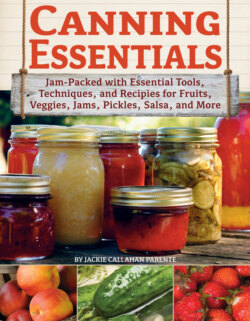Читать книгу Canning Essentials - Jackie Callahan Parente - Страница 11
WHERE IT BEGAN
ОглавлениеEvidence suggests that the oldest form of preservation was drying. Middle Eastern and Asian cultures as early as 12,000 BC dried their food in the hot sun. Dried foods allowed seafarers to extend the range of their explorations, eventually circumnavigating the globe. Fermentation was discovered accidentally when a few grains of barley were left in the rain. Through fermentation, microorganisms changed (fermented) starch-derived sugars into alcohols. This process had multiple benefits: food was more nutritious, more palatable, and in many cases, produced an alcoholic beverage—nectar of the gods! Curing and pickling both employed substances to change the chemistry of the food being preserved. In the case of pickling, vinegar and other acidic materials were found to provide climates unfriendly to the bacteria responsible for food spoilage, thus extending a food’s usable life. Curing utilized salt, nitrites, and smoke to preserve foods, inhibit the growth of Clostridium botulinum (botulism), and improve the taste and color of the food.
Freezing and cold storage were initially limited by geography. The 1800s brought the discovery of mechanical refrigeration, and eventually Clarence Birdseye perfected quick-freezing. While cold storage would significantly slow down the biological processes that caused the food to spoil and decompose, freezing would stop them altogether.
Home food preservation is certainly nothing new. One of the first preservation methods was drying foods in the sun. Dried fruits certainly haven’t lost favor over time.
